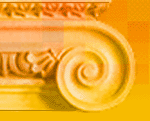|
“Art
is the most effective mode of communications that exists.”
― John Dewey
Video: Arguments for Arts Integration
Art For Children's Sake - A+ Schools Model, and more.....
Why Arts Education in Important and Who is Doing it Best?
The Various Arts: Visual Arts, Music, Dance, Media & Digital Arts, Literary Arts - Writing, Drama, Storytelling
Universal Concepts & Academic Vocabulary
ArtsNOW Workshop Follow-Up - July 2012
Go to the related website - arts integrated character development units
Go to related website masterworks universal concepts big ideas essential questions
Arts Integration – the use
of the arts to initially engage students, and then to accelerate and then to deepen learning, and then to forge vital connections
with other learning, is in some ways easy and simple and in some ways complex. Arts integration can be simple - just attention to the timeless idea that anything ‘hands-on’
is more engaging, is more likely to be understood and more likely to be remembered. So,
simply remembering to try to engage more of the senses, through music, visual arts, dance or movement, or drama or storytelling
will make lessons or units more engaging and more effective. Arts Integration can also be complex and effective at the very highest levels of learning and understanding,
and doing this takes time, practice and usually involves collaboration, with other teachers and ideally with artists, and
it involves the teacher in high levels of personal and professional learning – so be ready…
Nearly all of us have made use of the arts in one or more of our lessons, and
have seen the difference. When we are asked to reflect and describe an unusually effective
learning experience of our own, we most likely will describe a time when our senses were engaged, when we were making something,
and that the learning was made more meaningful by careful attention to our interests or to the making of connections
during the lesson. Formally, arts integration is usually
thought of having three components: 1 – as Learning “Through ” and
“With” the Arts....using
the arts to teach and learn another thing.....
2
– as a Curricular
Connections Process....Integrating two or more 'subject areas' to make higher level
connections
3 - as a Collaborative
Engagement, Professional Learning Experience.....artists and classroom teachers
working together......
Purposeful doing of this, planning for
the benefits of arts integration, can become nearly automatic with practice, and when done collaboratively can be some of
the most effective professional development available. This
is what we will be aiming for in the following website, podcasts, prompts, modules and courses. Of course, we will be
emphasizing the connections to character development and the benefits of school transformation through art integration and
character development and transformational (teacher) leadership.
Just
click on any underlined text to jump to more information.....
Arts Integration Overview
Case Study & Related Research: Bates MS
Case Study: A School Revitalized Through The Arts
Case Study: Arts Integration in Cobb County GA
Case Study: STEM in Cobb County Schoolc
Arts Integration - School Implementation Rubric
Project Zero - was founded by the philosopher Nelson Goodman at the Harvard Graduate School of Education in 1967 to study
and improve education in the arts. Goodman believed that arts learning should be studied as a serious cognitive activity,
but that "zero" had yet been firmly established about the field; hence, the project was given its name. Over the years, Project
Zero has maintained a strong research agenda in the arts while gradually expanding to include investigations into the nature
of intelligence, understanding, thinking, creativity, cross-disciplinary and cross-cultural thinking, and ethics.
Masterworks.....Universal Concepts.....Big Ideas.....Essential Questions
All The Senses
What Works......
The Brain
- "I must study politics and war that my sons may have liberty to study mathematics and philosophy. My sons
ought to study mathematics and philosophy, geography, natural history, naval architecture, navigation, commerce, and agriculture,
in order to give their children a right to study painting, poetry, music, architecture, statuary, tapestry, and porcelain."
- John Adams
John Adams is a very important
'founder' of the US, but in this case he might have it backwards. The arts are vital to our quality of life,
and education in the arts is vital. There is also a strong role for the use of the arts in learning and understanding
other academic disciplines, and in interdisciplinary / transdisciplinary learning.
Perhaps John Adams might
better have thought about starting
with the power of the arts, and understanding and appreciating the lessons of the arts.... (He also
needed to give some thought to daughters, as Abigail famously reminded him "I long to hear
that you have declared an independency. And, by the way, in the new code of laws which I suppose it will be necessary for
you to make, I desire you would remember the ladies and be more generous and
favorable to them than your ancestors." )
The picture below is related to an emerging
Arts Integrated Unit, and is only a small portion of an incredible achievement by five Hong Kong 10th Grade students (CoCo
Cheung, Becila Tang, Manna Wong, Helen Wong, and Jonann Yau)
with the encouragement of their teacher Ms. Elaine Dew. They will make the trip to Lianshan,
China with me in November 2011, to discuss the painting and their effort and teach younger students, a real opportunity for
moral action. The original scroll painting from which they worked is considered the 'Mona Lisa' of China, and
the first of several versions, was completed in the Northern Song Dynasty (960-1127). Learn more by clicking below the
picture.

More about the painting 'Scenes Along the River......' by Zhang Zeduan
Interactive 'Scenes Along The River'
Modern Sculpture of the Ancient Painting
Interactive Timeline of Art History - Metropolitan Museum of Art
Art History Today - Website & Blog
Art History - Interactive Timeline - Kahn Academy
Kahn Academy on 'The School of Athens'
|

